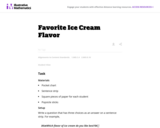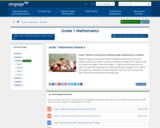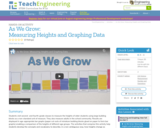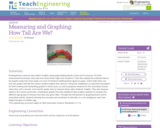
CSDE Model Curricula Quick Start GuideEquitable and Inclusive Curriculum The CSDE believes in providing a set of conditions where learners are repositioned at the center of curricula planning and design. Curricula, from a culturally responsive perspective, require intentional planning for diversity, equity, and inclusion in the development of units and implementation of lessons. It is critical to develop a learning environment that is relevant to and reflective of students’ social, cultural, and linguistic experiences to effectively connect their culturally and community-based knowledge to the class. Begin by connecting what is known about students’ cognitive and interdisciplinary diversity to the learning of the unit. Opposed to starting instructional planning with gaps in students’ knowledge, plan from an asset-based perspective by starting from students’ strengths. In doing so, curricula’s implementation will be grounded in instruction that engages, motivates, and supports the intellectual capacity of all students.Course Description: In Grade 1, instructional time should focus on four critical areas: (1) developing understanding of addition, subtraction, and strategies for addition and subtraction within 20; (2) developing understanding of whole number relationships and place value, including grouping in tens and ones; (3) developing understanding of linear measurement and measuring lengths as iterating length units; and (4) reasoning about attributes of, and composing and decomposing geometric shapes. Upon completion of this course students will have the ability to: Represent and solve problems involving addition and subtraction. Understand and apply properties of operations and the relationship between addition and subtraction. Add and subtract within 20. Work with addition and subtraction equations. Extend the counting sequence. Understand place value. Use place value understanding and properties of operations to add and subtract. Measure lengths indirectly and by iterating length units. Tell and write time. Represent and interpret data. Reason with shapes and their attributes.Aligned Core Resources:Core resources is a local control decision. Ensuring alignment of resources to the standards is critical for success. There are tools that are available to assist in evaluating alignment, such as CCSSO’s Mathematics Curriculum Analysis Project and Student Achievement Partner’s Instructional Materials Evaluation Tool. In addition EdReports and Louisiana Believes are two sources of completed reviews for a variety of resources. Connecticut is currently working on providing additional alignment guidance for the most frequently used resources across the state. Aligned Core Programs: The CSDE in partnership with SERC has engaged with providers of high-quality vetted resources to provide additional alignment guidance to the CSDE model curriculum. High-quality instructional resources are critical for improving student outcomes. The alignment guidance is intended to clarify content and support understanding for clear implementation and coherence. Materials selection is a local control decision and these documents have been provided from participating publishers to assist districts in implementation. Use of the materials from these publishers is not required. These aligned core programs meet expectations as reported by EdReports. If your resource is not listed below, you are encouraged to review EdReports to ensure the alignment of your resource to the Connecticut Core Standards. Strong alignment of curricula and instructional materials have the potential to support student engagement of meaningful grade level content daily and teacher growth. enVisions Grade 1Eureka Grade 1Imagine Learning Illustrative Mathematics Grade 1i-Ready Classroom Mathematics Grade 1HMH Into Math Grade 1Financial Literacy Connections:The State of Connecticut is committed to implementing high-quality Financial Literacy instruction at all grade levels beginning in kindergarten. Financial Literacy supports students’ academic performance in several subject areas. The K-5 Model Math Curricula embeds tasks that align the mathematical content and skill to the essential Financial Literacy concepts such as income, spending, saving, investing, credit and risk. The concepts contained in the learning tasks are designed to be rich, hands-on activities with developmentally appropriate real-world connections. The tasks are identified by grade level and embedded in the appropriate units so that students can demonstrate mastery of what they need to know and be able to do by the end of their K-5 school experience. In this way, elementary students will be prepared to build upon Financial Literacy knowledge as they advance through middle and high school.Additional Course Information: Major work of Grade 1 mathematics focuses on addition and subtraction – concepts, skills, and problem solving; place value. Fluencies expected for Grade 1 include: Add/subtract within 10Habits of Mind/SEIH/Transferable Skills Addressed in the Course: The Standards for Mathematical Practice describe the thinking processes, habits of mind, and dispositions that students need to develop a deep, flexible, and enduring understanding of mathematics. They describe student behaviors, ensure an understanding of math, and focus on developing reasoning and building mathematical communication. Therefore, the following should be addressed throughout the course: Make sense of problems & persevere in solving them Reason abstractly & quantitatively Construct viable arguments & critique the reasoning of others Model with mathematics Use appropriate tools strategically Attend to precision Look for & make use of structure Look for & express regularity in repeated reasoning
- Subject:
- Mathematics
- Material Type:
- Full Course
- Provider:
- CT State Department of Education
- Provider Set:
- CSDE - Public
- Date Added:
- 06/14/2023





